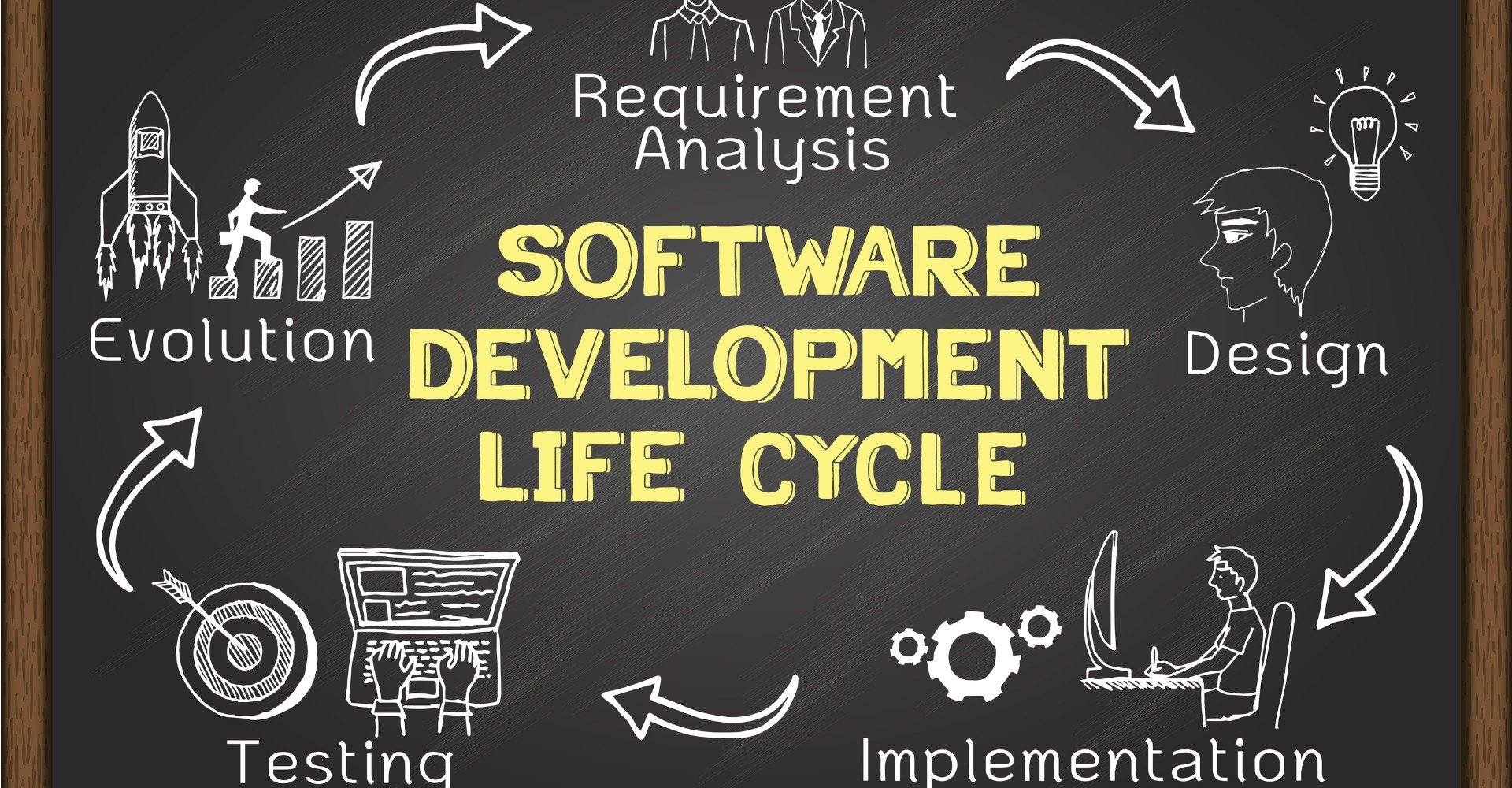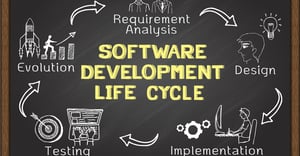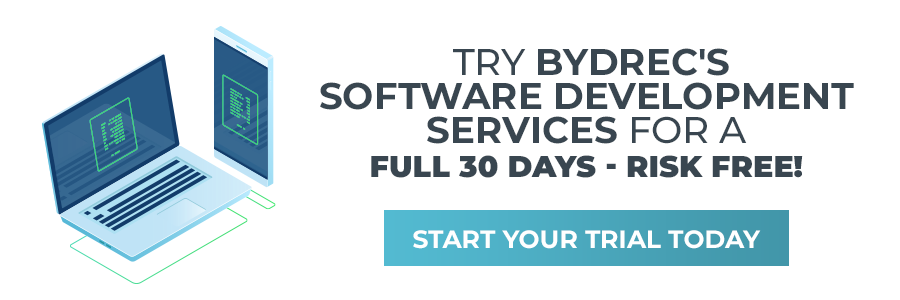What Are the Three Primary Use Cases of the Security Lifecycle Review (Slr)? (Choose Three)

A software evolution life bike (SDLC) refers to the diverse stages involved in organization development in the fields of software engineering, organization engineering, and information systems. It may be focused on software, hardware, or a combination of both. SDLC is crucial because information technology breaks up the long and tedious life cycle of software development. By and large, evaluating each part of the development is much easier and it helps programmers meantime work on every stage. But what is SDLC, really? SDLC is the process of planning, creating, testing and deploying. This life cycle is often a waterfall model as information technology cascades from feasibility study, systems analysis, design, implementation, testing, and finally to install and maintenance. While there are countless advantages of having this structure for a pattern project, hither are the most common ones: Every product has an identifiable life cycle. But when it comes to engineering science, in that location's a lot more to it than meets the eye. In general, the product life wheel pertains to the stages of production, delivery, apply, and decommission. This simple clarification applies to near every tangible particular, but does it also employ to software? The software development life cycle is substantially a methodology that defines the processes involved in creating software. It simplifies the seemingly long and complicated stages of developing software. And past breaking downwardly the entire process into stages, programmers can evaluate each footstep and work more efficiently. The typical product life cycle of technology is separated into 5 stages. These stages are the aforementioned across all conventional products, namely: introduction, high-viability phase, phase-out, and terminate-phase. Merely our goal in this article is to understand why the software evolution life cycle is different from ordinary product life wheel, besides as its importance and benefits. In contrast, the following are the stages in a software evolution life wheel: In a perfect scenario, these stages should piece of work smoothly. But since no plan is ever perfect, developers today learned to accommodate by increasing their involvement in every step of the process. Monitoring tools used by every developer at whatever stage of the cycle makes performance tracking more efficient and allows them to pinpoint problems, whether information technology began at inception or the end phase of the application or software. Now that nosotros've identified the stages of a software evolution life bike, let'southward observe out more about how this structure benefits every evolution project. Some of the credible advantages include: Dissimilar a product life bicycle where the stages menstruation in a linear direction, a software development life bicycle has different methodologies. For instance, the virtually common model is the "waterfall" model, where the side by side phase only begins later completing the previous stage. Other popular models include the "agile" model and the "spiral" model. Every system can cull the correct methodology–afterwards comparing the pros and cons, of course. How else tin can your software evolution squad benefit from implementing this model? Software development life cycle washed the right mode provides the necessary processes and guidelines in achieving direction control and keeping detailed documentation. Since every member of the team receives aplenty assistance, they tend to be more productive and efficient. Moreover, getting the understanding and feedback from every party involved is essential in coming upwardly with actionable goals that lead to the nigh successful results. Compared to a production life bike (PLC), a system development life cycle is used to develop a functional, large-scale business concern system. Virtually developers utilize SDLC methodologies such as Waterfall and Agile and apply it to their projects. Other examples of commonly-used SDLC models are DevOps, Iterative, Lean, Five-Shaped, and Spiral. SDLC is a continuous process that begins from controlling, and ends with a full deployment. There are several SDLC methodologies to choose from—each with its own pros and cons. Below are the other means you and your team tin can do good from the SDLC. In this digital historic period we live in, it'south inexplainable how many projects and companies still aren't adhering to the SDLC process. Nearly software development initiatives implement a fly-by-night approach--something that often yields low-quality results. Creating a production from scratch without any guidance from an SDLC often results in systems that become over budget, are delivered late, and that fail to reach stop-user/customer expectations. Information technology might even cause an unabridged projection to completely fail, which could exist a nightmare for all stakeholders. Lots of teams lack motivation or have poor morale considering of projects whose scope constantly changes. They also suffer when "bandage" solutions are oftentimes used due to poorly-implemented processes around their work. With an SDLC in place, this trouble can be profoundly reduced. Developers have a roadmap they can refer to, so the management of scope is improved and development problems are less likely to happen. While there will always be unexpected issues during a software development process, adhering to a structured cycle volition certainly minimize these occurrences. The absenteeism of an SDLC typically leads to several bug that volition become more prevalent as the development goes on. For case, a lack of proper advice between the development team and customer tin can produce systems that practise not come across the needs of the finish-user. If there's mistrust in the customer management staff, in that location will be an impact on the development contractor maintaining a follow-on contract. Some other thing to consider is that without basic processes or methodology concepts, you volition probable end up with defective deployments. Delivering an unstable output negatively affects not only the company's reputation but also the track record of developers. Starting a new SDLC process with a simple meeting and discussing the shortcomings of a finished project can do wonders for hereafter projects that take a similar scope. Conducting a review helps the evolution team eliminate steps in the development process that did not provide any kind of value at all. Performing steps in a development procedure just for the sake of doing so can waste valuable effort and fourth dimension. On the other hand, removing unnecessary stages provides teams with multiple benefits, such as early on system deployment or flexibility to solve unplanned problems down the road. Post-obit a well-defined methodology allows development teams to produce stable systems, ensure customers are informed, have a clear agreement of the chore at paw, offering better estimates, and identify potential pitfalls early on in the project. Over time, teams that adhere to a software development life wheel will become more than constructive at determining issues earlier they even occur. This volition assistance them not merely eliminate problems completely merely also create better workarounds in case they happen. All engineering projects take a so-called "lifecycle." For those creating a complex system, it is called a system development life cycle. If the system you're creating is software-intensive, and so that lifecycle is known equally the software development lifecycle. Regardless of the blazon of projection, the process is the aforementioned. Everything starts past identifying stakeholders and their expectations from the project, before figuring out what is required to create and make sure the definition of what should exist created is conspicuously agreed upon by all stakeholders. And so, how the production will exist built should exist defined. The process continues to product design, building, and testing. This will be followed by deployment and so the projection will exist useful to the stakeholders. The product is maintained for a while until they make up one's mind to retire the product. At that place are lots of ways to conduct the same steps: incrementally, iteratively, or sequentially. Developers and projection managers have many frameworks and models to choose from. The different SDLC methodologies refer to the various activities that go into the steps to let an organization to create and maintain products. Having a articulate understanding of the bones life cycle activities gives you the assurance that all the tasks that should exist accomplished are appropriately accounted for. When done right, the software development life bicycle can provide teams with the highest level of documentation and management command. Developers are more efficient because they are informed and guided on what they should create and why. All concerned parties agree on the objective upfront and come upwardly with a clear action plan for achieving that goal. Each stakeholder besides understands the resources and costs required. At that place'south no such affair as a specific SDLC methodology or a cookie-cutter approach for all types of projects. The system evolution life cycle only works equally a starting point of your efforts–information technology notwithstanding needs to exist tailored according to your unique needs. For project managers using an SDLC, search for a model that works for you and stick with information technology. Doing so enables y'all to come up up with an stop result that perfectly suits your item needs and situation. >> Connect with Bydrec on LinkedIn to get more valuable content! 
What Is the Difference Betwixt Product Life Cycle and Software Evolution Life Cycle?
Product Life Cycle vs. Software Evolution Life Cycle

Why is Software Development Wheel More Preferable than Production Life Wheel?
Related Content: Active VS Waterfall: An In-Depth Expect
 1. Proper Management for Projects
1. Proper Management for Projects2. Better Scope Management
Related Content: What is Scope Management?
3. Helps Avoid Issues During Evolution
4. Streamlines Process
5. Potential Problems are Identified Immediately
How a Software Evolution Life Cycle Works
Final Thoughts

Source: https://blog.bydrec.com/key-benefits-of-the-software-development-life-cycle
0 Response to "What Are the Three Primary Use Cases of the Security Lifecycle Review (Slr)? (Choose Three)"
Enviar um comentário